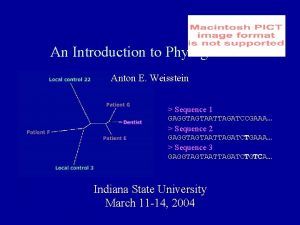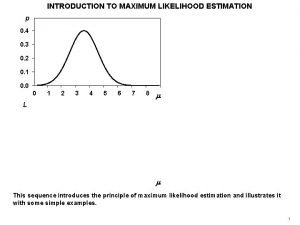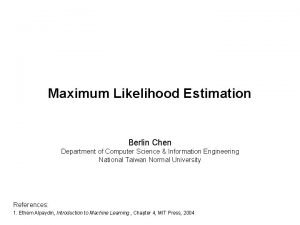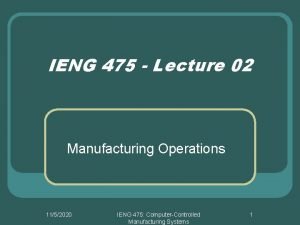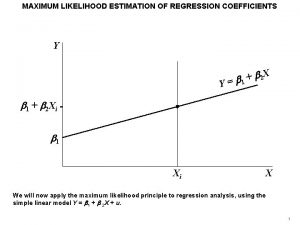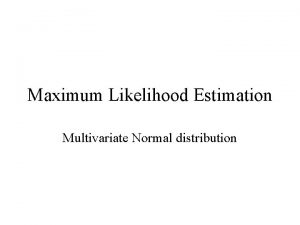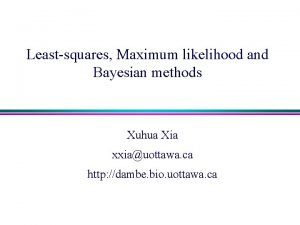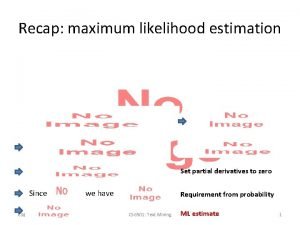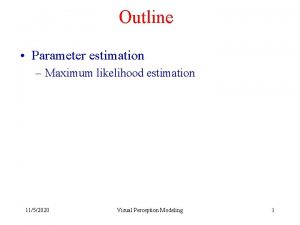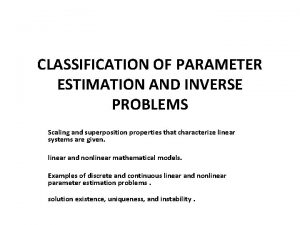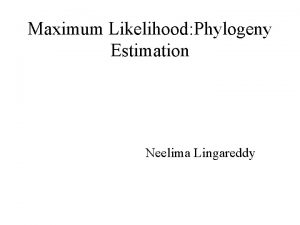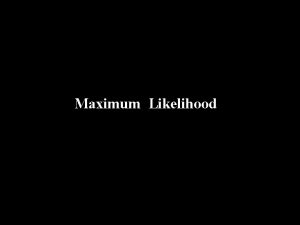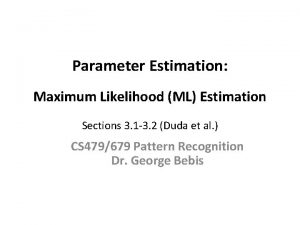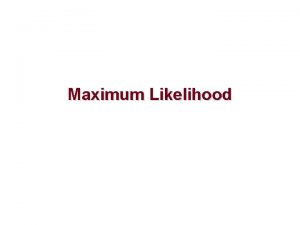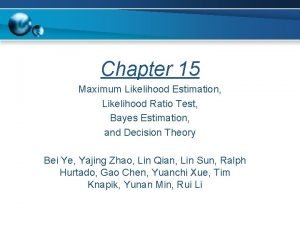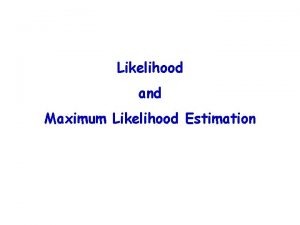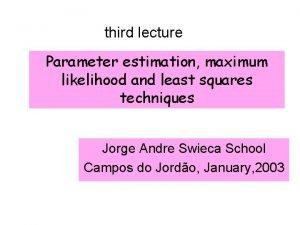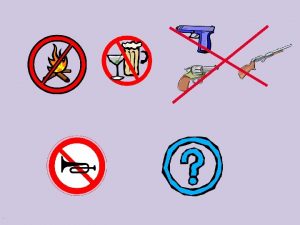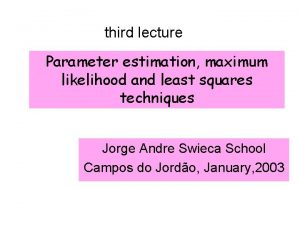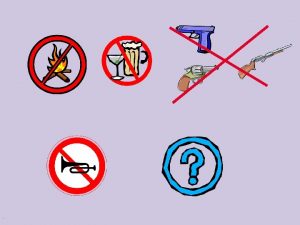Outline Parameter estimation Maximum likelihood estimation 1152020 Visual















- Slides: 15

Outline • Parameter estimation – Maximum likelihood estimation 11/5/2020 Visual Perception Modeling 1

Bayes Decision Theory • Assumptions – Suppose that there are c categories • { 1, 2, . . . , c} – The prior probability and class conditional density are known – There a possible actions • { 1, 2, . . . , a} – Loss function ( i | j} describe the loss incurred for taking action i when the state of nature is j 11/5/2020 Visual Perception Modeling 2

Bayes Decision Rule • To minimize the overall risk, compute the conditional risk and select the action for which the conditional risk is minimum – The resulting minimum overall risk is called the Bayes risk, which is the best performance 11/5/2020 Visual Perception Modeling 3

Discriminant Functions for Normal Density • Minimum error rate classification for normal density • Three different cases 11/5/2020 Visual Perception Modeling 4

Parameter Estimation • We could design an optimal classifier if we knew the prior probabilities and the classconditional densities – Unfortunately, in pattern recognition applications we rarely have this kind of complete knowledge about the probabilistic structure of the problem • Training data – Some vague, general knowledge about the problem – A number of design samples 11/5/2020 Visual Perception Modeling 5

Parameter Estimation – cont. • Two approaches – Parameter estimation • Estimate the parameters of the unknown probabilities and probability densities – Non-parametric procedures • Multi-layer perceptrons and in general neural networks • Fisher linear discriminant function • Work in the feature space directly 11/5/2020 Visual Perception Modeling 6

Parameter Estimation – cont. • Parameter estimation – Maximum-likelihood approach • Parameters as quantities whose values are fixed but unknown • The best estimate of their value is the one that maximizes the probability of obtaining the samples – Bayesian learning • Parameters are random variables with known prior distribution • Observations convert the prior into posteriori 11/5/2020 Visual Perception Modeling 7

Maximum-Likelihood Estimation • Assumptions – We separate a collection of samples according to class • D 1, D 2, . . . , Dc – Samples in Dj are drawn independently according to the probability p(x| j) – We assume that p(x| j) has a known parametric form and is uniquely determined by the value of a parameter vector j – To simplify further, we assume that samples in Di give no information about j if i j 11/5/2020 Visual Perception Modeling 8

Maximum-Likelihood Estimation – cont. • Suppose that D contains n samples – x 1, . . . , xn – By assumption that samples were drawn independently, we have – The maximum-likelihood estimate of is the value of * that maximizes p(D| ) 11/5/2020 Visual Perception Modeling 9

Maximum-Likelihood Estimation – cont. • Log-likelihood 11/5/2020 Visual Perception Modeling 10

Maximum-Likelihood Estimation – cont. • The maximum likelihood solution is – A solution * can be a true global maximum, a local maximum, or a minimum, or an inflection point of l( ) • We need to check each solution individually • Or calculate the second derivatives to identify the global optimum 11/5/2020 Visual Perception Modeling 11

Maximum-Likelihood Estimation – cont. • Gaussian case - Unknown 11/5/2020 Visual Perception Modeling 12

Maximum-Likelihood Estimation – cont. • Gaussian case - Unknown and – Univariate case 11/5/2020 Visual Perception Modeling 13

Maximum-Likelihood Estimation – cont. • Gaussian case - Unknown and continued 11/5/2020 Visual Perception Modeling 14

Maximum-Likelihood Estimation – cont. • Bias – For a large number of samples, 11/5/2020 Visual Perception Modeling 15
 Maximum likelihood vs maximum parsimony
Maximum likelihood vs maximum parsimony Maximum likelihood vs maximum parsimony
Maximum likelihood vs maximum parsimony Multiple imputation mplus
Multiple imputation mplus Maximum likelihood estimator variance
Maximum likelihood estimator variance Pgm
Pgm Maximum likelihood bernoulli
Maximum likelihood bernoulli 1152020
1152020 1152020
1152020 Carpal tunnel differential diagnosis
Carpal tunnel differential diagnosis Maximum likelihood
Maximum likelihood Mle formula
Mle formula Ppdf
Ppdf Nrmd
Nrmd Lsa uva
Lsa uva Maximum likelihood
Maximum likelihood Parameter estimation and inverse problems
Parameter estimation and inverse problems

